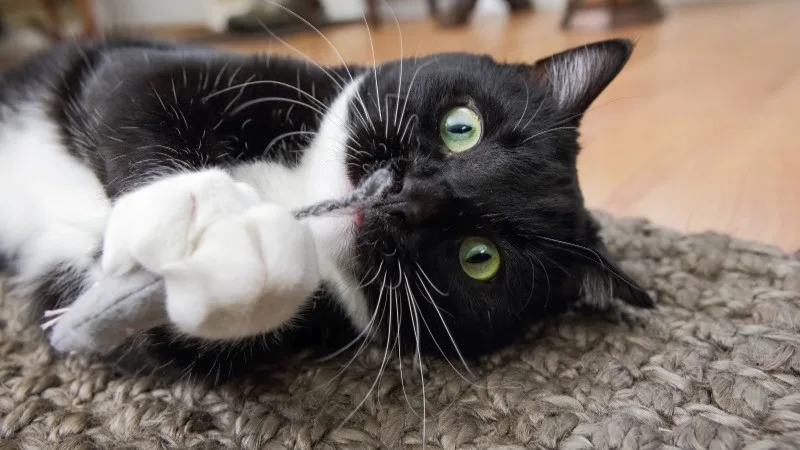How to Grow Your Own Catnip
Interested in growing your own catnip? Here's an easy and fun way to cultivate catnip at home and spoil your cat. We also discuss unique ways to treat your feline.

Catnip, a perennial herb from the mint family, has an innate ability to attract and stimulate our feline friends. And when it comes to providing them with an all-natural treat, nothing beats homegrown catnip for freshness and potency.
In this article, we'll guide you through the easy and fun process of growing catnip in your own home or backyard. Get ready to spoil your furry companion with this wonderful addition to their playtime routine!
Selecting Quality Catnip Seeds
To get your catnip-growing venture off the ground, it's essential to select quality seeds. There are numerous reputable sources for purchasing catnip seeds, including local garden centers, online retailers, and some pet stores. Be sure to read reviews and select a reliable supplier to guarantee the best outcome possible.
Preparing Your Catnip Growing Space
Before planting your seeds, decide whether you want to grow the catnip indoors or outdoors. Both options have their advantages, so take into account factors like available space, sunlight intensity, and your cat's access to the growing area when making this decision.
When selecting the ideal location for your catnip plants, keep in mind that they need at least 6 hours of direct sunlight daily and well-draining soil. If growing indoors, placing plants near a sunny window should do the trick.
For outdoor growing, a sunny garden bed or container works great. Containers or pots are especially convenient, as they make it easier to maintain and protect your plants.
Planting Your Catnip Seeds
Now that you've selected your seeds and prepared your growing space, it's time to plant those catnip seeds! Follow these easy steps for successful planting:
Fill your container or garden bed with well-draining potting soil, leaving some space at the top.
Scatter the catnip seeds evenly across the soil, ensuring that they're spaced about
.
Gently mist your soil with water to keep it moist, encouraging seeds to germinate.
Caring for Your Growing Catnip Plants
As your catnip plants begin to flourish, they'll need some TLC in order to thrive. Here are a few essential care tips:
Watering
Catnip plants prefer consistently moist soil, but be mindful not to overwater. Allow the top inch of soil to dry out before watering again. To determine when it's time for irrigation, stick your finger about an inch into the ground and if it feels dry, give your plants a drink. Remember that over-watering can lead to root rot and other issues, so strike an appropriate balance when providing water.
Fertilizing
Feed your catnip plants a weak, organic fertilizer every couple of weeks according to the package instructions. Be mindful not to over fertilize, as this may promote excessive growth and reduced potency of your herb.
Pruning
Regularly pinch back the tips of your catnip plant to encourage bushy growth and prevent it from becoming leggy. Removing these growing tips will encourage it to branch out, giving it a fuller appearance. It's also wise to remove any dead or yellowing leaves to keep your plant looking its best.
Protecting Your Catnip Plants
To safeguard your plants from pests and curious cats, consider using barriers or covers such as mesh nets or cloches. This will keep unwanted insects and your feline friend from damaging the plants while they grow.
If you spot pests such as aphids or spider mites on your plants, use a pet-friendly insecticidal soap or neem oil spray to treat them effectively. Be sure to follow the manufacturer's instructions for the best results.
Harvesting and Storing Your Catnip
Once your plants reach their peak growth stage, usually when they begin to flower, it's time for harvest! By following these steps, you can guarantee that your homegrown catnip remains potent and fresh for your furry friend:
Step 1: Harvesting Catnip
Take clean, sharp scissors or garden shears and trim off the catnip stems at the base of the plant. Try to harvest on a dry day after any morning dew has evaporated, as this helps reduce mold during drying. Additionally, it's best to harvest before flowers fully open as this is when essential oils are most concentrated – providing your cat with the most potent catnip possible!
Step 2: Drying Catnip
Bundle the stems together and secure them with a rubber band, twine, or string before hanging them upside down in an area away from direct sunlight. Make sure there's enough space between bundles to allow proper air circulation which helps prevent mold or mildew growth. The bundles of catnip should be fully dry within 4-8 weeks.
Step 3: Separating Leaves and Flowers
Once dry, carefully strip away the leaves and flowers from their stems. This can be done by hand or by gently rubbing the stems between your fingers over a clean surface. Discard the stems, as they contain lower concentrations of the essential oils that attract and stimulate cats.
Step 4: Storing Your Catnip
When they're dried, store the leaves and flowers in an airtight container. It's best to use glass or metal containers, because plastic can absorb some of the essential oils.
Keep the container in a cool, dark place like a pantry or cupboard to maintain freshness and potency. Dried catnip can last for a year or more when properly stored, though it's best to use it within six months for maximum effectiveness.
Creative Ways to Enjoy Your Homegrown Catnip
Now that your homemade catnip is ready, there are endless creative ways to delight your feline friend with this natural treat. Here are a few ideas:
Create fun and stimulating cat toys:
Sew or purchase small fabric pouches and fill them with dried catnip for an enticing toy your furry friend will love!
Sprinkle dried catnip on your cat's scratching post:
Not only will this keep them entertained, but it helps keep furniture intact as well.
Make a catnip-infused spray:
Steep one tablespoon of dried catnip in boiling water for five to ten minutes. Cool the mixture and strain it into a spray bottle. You can use this fragrant mist to freshen up your cat's favorite resting spots or encourage them to play with their toys.
Offer as a treat:
You can also give your cat a small pinch of dried catnip as an incentive or sprinkle it onto their favorite toy or blanket.
Are You Ready to Grow Your Own Catnip?
Growing catnip can be an enjoyable and rewarding process that offers numerous advantages for both you and your feline friend. Not only will it guarantee freshness and potency, but it's also a fun and cost-effective alternative to store-bought options. So, give it a try and watch as they adore their new favorite playtime treat!
If any of the catnip-related excitement leads to an injury, Accident & Illness Coverage through AKC Pet Insurance (underwritten by Independence American Insurance Company) may help with costly vet bills, so you can focus your attention on the health of your cat. Click here for a quote today and prepare for the unexpected!

Richard has shared his life with pets since childhood, and currently has a rescue cat and dog. He works with veterinarians and pet businesses to improve their content. To find out more, please visit his [website](https://richardrowlands.com/).
READ MORE ARTICLES